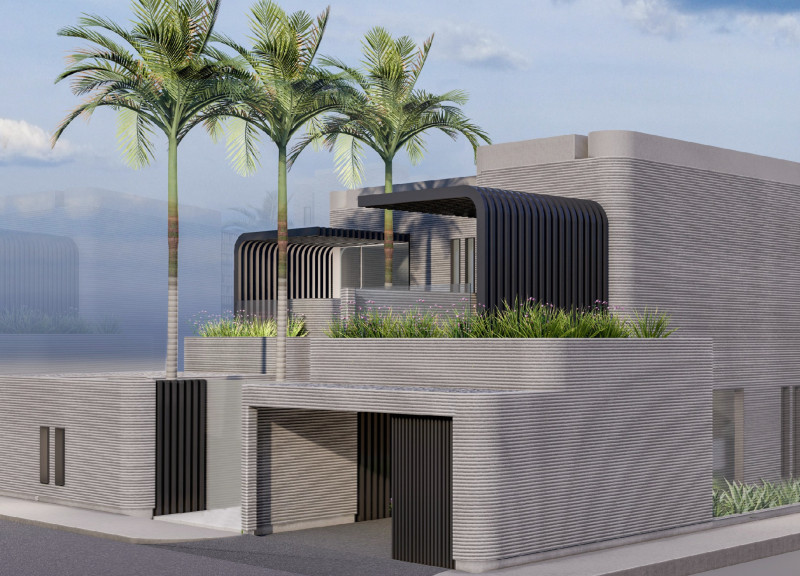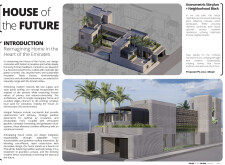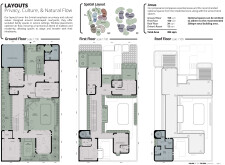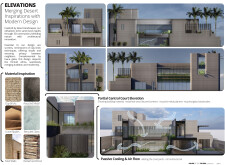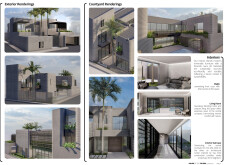5 key facts about this project
### Overview
Located in Dubai, the House of the Future presents a contemporary residential design that integrates advanced construction methods with Emirati cultural traditions. Utilizing 3D construction technology, the project aims to fulfill modern residential needs while reflecting the local context. Central to its design intent is a commitment to sustainability, adaptability, and cultural resonance, ensuring that the dwelling meets the demands of today's occupants without compromising its environmental or cultural integrity.
### Sustainability and Material Innovation
The project prioritizes the use of environmentally responsible materials, including green concrete, cob, recycled steel, and reclaimed materials such as metal, glass, and clay bricks. Green concrete and cob enhance thermal insulation and reduce the carbon footprint associated with conventional building materials, while recycled elements contribute to resource efficiency and waste reduction. Through these choices, the design seeks to minimize environmental impact while incorporating aesthetics that resonate with local craftsmanship and heritage.
### Spatial Organization and User Experience
The layout is deliberately crafted to ensure privacy and cultural sensitivity, hallmarks of Emirati residential design. Key features include courtyards that promote social interaction while providing private retreats, and room arrangements optimized for natural ventilation and light. The building's exterior façade mirrors the contours of the desert landscape through 3D-printed features that enhance passive cooling. Interior spaces are designed with functionality in mind, offering areas such as a Majlis that facilitate communal living, and living rooms that connect to central courtyards, allowing for a fluid transition between indoor and outdoor environments.
Additionally, exterior elements, such as native landscaping and rooftop solar panels, integrate sustainability into the living environment, demonstrating modern technological solutions alongside traditional design principles.


